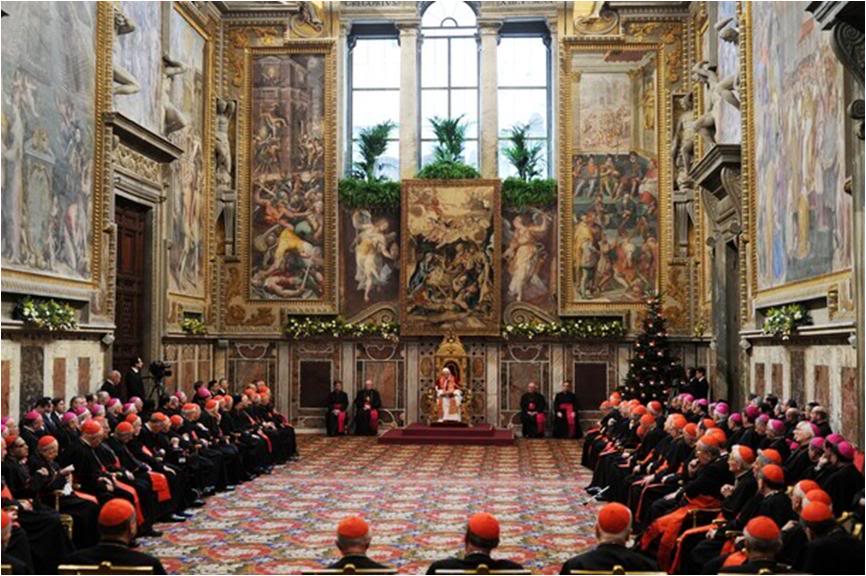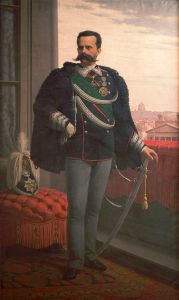The following text was taken from ” Le Premier Cardinal Canadien: Souvenir De 1886, Publié Avec Autorisation, Québec, Typographie D’Aug. Cote Et Cie.”. I have translated it from the French, so there may be some mistakes, particularly where some of the speeches were given in English, translated for the book, and now translated back into English again, but it does give an idea of quite how grand a churchman Uncle Henry was.
The Ablegate charged by the Holy See to bring Cardinal Taschereau, the red berretta, the cardinalate insignia, was His Excellency Mgr. Henry O’Bryen, who is of Irish origin.
Mgr. O’Bryen was not on his first journey in America. In 1877, he had travelled through Quebec; and, for the last few days, was the guest of His Excellency Monsignor Gonroy, at the time, the Delegate of the Holy See in Canada.
Mgr the Ablegate is tall, handsome, noble looking, with a good figure; he seems to be about fifty years old.

On the 8th of July, he embarked at Liverpool, aboard the Polynesian, on the Allan line, His Excellency arrived at Lévis on Sunday the 18th at six o’clock in the morning. As the ship passed Pointe-au-Père, she was greeted by a fourteen gun salute. At the landing-place at Lévis, Mgr. O’Bryen was received by the Grand Vicar Legaré and M. G.-A. Marois,the Cardinal’s secretary, and immediately taken to the Church of Notre-Dame de Lévis, where he said Mass at 7a.m. His Excellency then breakfasted at the presbytery, where he was hosted by Father Gauvreau until the departure time for the journey and solemn arrival at Quebec.
A few minutes before one o’clock in the afternoon, Mgr O’Bryen left the presbytery of Lévis, accompanied by M. Le Grand Vicar Legaré, Father Gauvreau, and several other members of the clergy, they made their way towards the port, escorted by a large crowd of citizens, coming from all parts of the town, who demonstrated their respect for the representative of His Holiness by their presence. A boat had been specially placed at the disposal of the Ablegate and his party, of which the band of St. Joseph de Lévis was also part.
At Quebec, the quays were crowded; particularly notable were the Rev. M. Méthot, Rector of the Université Laval, the Redemptoris Fathers, and numerous clergy, His Honor the Mayor Langelier with the Aldermen and Councillors, Mr Carbray, President of the National Irish Society with a large number of members of the Society, Mr. H.J.-J.B. Chouinard, President of the Company of Saint John the Baptist.
His Excellency got into a carriage drawn by four horses; it was followed by Major Vicar Legaré, His Honor the Mayor and Mr. Carbray. The procession included a very large number of carriages; the clergy followed his Excellency; they were followed by the members of the City Council and the notables of Quebec. Members of the National Irish Society, with their rich banners, preceded by the band of St-Joseph de Lévis, marching in front of the carriage of the Ablegate. Along the way, thousands of citizens were massed on either side of the street, but especially on the slope of the Côté La Montagne and cheered the representative of the Holy Father. On the outskirts of the Cardinal’s Palace, there were between seven and eight thousand persons. All the heads were uncovered as His Excellency passed by.
On his arrival at the Cardinal’s Palace, Mgr.O’Bryen went to his Eminence, who was awaiting him, surrounded by numerous clergy and many civil dignitaries, and handed him his credentials.
His Eminence thanked him and added:
“The persons whom you see gathered in this hall have come to pay tribute to your Excellency, and to prove again their attachment to the Sovereign Pontiff. In the decree which calls me Cardinal, His Holiness Leo XIII says that he has raised me to this high dignity, to reward Canada for the devotion which she has never ceased to show towards the Holy See. When you return to Rome, Excellency, you will be able to repeat to His Holiness what you have seen, and you will be able to assure him that zeal for the glory of God and attachment to his Church will not be slowed down among the inhabitants of this country. “
Having thus informed His Eminence of the object of his mission, Mgr. O’Bryen visited His Excellency Monsignor Lynch, Archbishop of Toronto, to inform him that he was the bearer of the official documents under which his authority was delegated by the Holy See to transmit to His Eminence the cardinal’s berretta

Outside Rome, the solemn transmission of the red berretta is usually performed by the Head of State, when the latter is Catholic. As the Governor-General, who may be regarded as the head of the State in the Dominion of Canada, does not belong to the Catholic Church, the Holy See has delegated Venerable Archbishop of Toronto, Province of Ontario, Monsignor John Lynch to represent it in this august ceremony.
Bishop Lynch had arrived in Quebec City on the previous Saturday, July 17, and was the guest of His Eminence. His Grace was not unacquainted with Mgr Taschereau: it was he who, fifteen years ago, had ordained the future Cardinal a bishop. The honour which the Holy See had delegated to the Archbishop of Toronto this year was a magnificent crowning of his first mission; It was a further recognition of the Church in Quebec by the illustrious Metropolitan of the Church in Ontario. The Irish population of Quebec had reason to be proud of the choice made by His Holiness of two sons of Ireland to represent Him in this great circumstance. So, the day after the arrival of Mgr O’Bryen, the National Irish Association of Quebec City, was able to go to His Excellency to welcome him to the Irish community in Canada. The reception took place, at 4 o’clock in the afternoon, on the 19th of July, in the great salon of the Cardinal’s palace. Mr. Carbray, President of the Irish National Association, accompanied by a large delegation, read to His Excellency the following address, which had been magnificently illuminated.
Address Of The Irish Association To Mgr O’Bryen
To His Excellency the Most Reverend Monsignor Henry O’Bryen, Ablegate of His Holiness.
Monsignor,
We are certain that you are not surprised to find many of your compatriots on the shores of the New World. We are scattered all over the civilized world, and even in places where civilization has not yet penetrated; for where are the Irish not found?
Our fathers, or we ourselves, have been obliged to seek refuge and livelihood abroad, far from the much loved island of our ancestors, but towards which our eyes turn with sadness and love, as the Jewish people do for their beloved land of Israel.
Here, however, thank God! We did not find ourselves strangers. We were received as brothers by the good people of Canada, the children of that great branch of the Celtic race, the old Gaul. It would be too lengthy to relate the beginnings and growth of our people in this country; Suffice it to say that we are here in the hundreds of thousands, forming an important part of the population of this happy and prosperous country of Canada.
It is not in this city, Monsignor, that you will find hundreds of thousands of us, for it could not contain us all; but we count in tens of thousands, Irish descendants of Irishmen, who offer a most cordial welcome “Céad míle fáilte” to the illustrious member of our race who comes in the midst of us as the representative of the great, the immortal Leo XII, Our Holy Father and Vicar of Jesus Christ on earth, to our pious, zealous and holy archbishop, to confer upon His Eminence the symbols which create him a Cardinal-Prince of the Holy Roman Church,
Monsignor. Even though you are far from Rome,your adopted city, we do not ignore the greatness of your character, your love and loyalty to Ireland, nor the noble zeal that you have always deployed for her interests.
Welcome, Monsignor! May your stay in the midst of us be happy and joyful, and when you return to Rome, please tell Our Holy Father that you have found in this country a large population of Irishmen, from whom His Holiness has always had allegiance, and who, thank God, do not derogate from the loyalty and the faith of their fathers.
Félix Carbray,
President of the Irish Association.
His Excellency replied in eloquent terms. He alluded to the dispersion of the Irish race, which the Almighty obviously uses to spread the Catholic faith. Mgr. O’Bryen spoke in warm terms of the great progress of the Church in America and Australia, due in large part to the Irish race and its fidelity to the Church. He thanked his compatriots for the large part they had taken in the great ovation of which he had been the object at his arrival, and that he would remember all his life. He alluded to the zeal and piety of His Eminence Cardinal Taschereau, and to the high esteem which he enjoyed in Rome, and spoke highly of the people of Canada and his clergy. Finally, His Excellency expressed the hope that better days would shine for Ireland, whose autonomy cannot fail to be recognized in the very near future.
It goes without saying that Monsignor O’Bryen, throughout his stay, was the object of brilliant receptions, testimonies of veneration for his character as papal Ablegate, and statements of high esteem for his merit by civilian dignitaries, religious authorities and various communities in the city. These demonstrations, the splendor of which was somewhat lost amidst the splendours of the cardinal’s festivals, were none the less real, and could only confirm in the mind of the illustrious Delegate of the Holy See the truth of the words addressed to him by his Eminence at his first interview.






